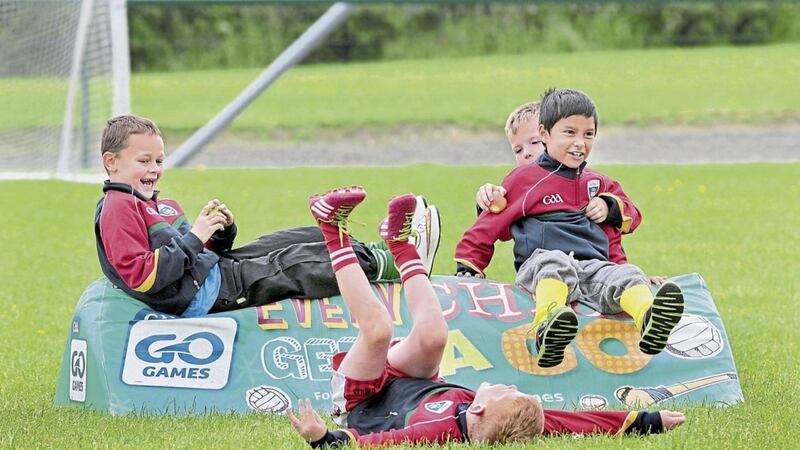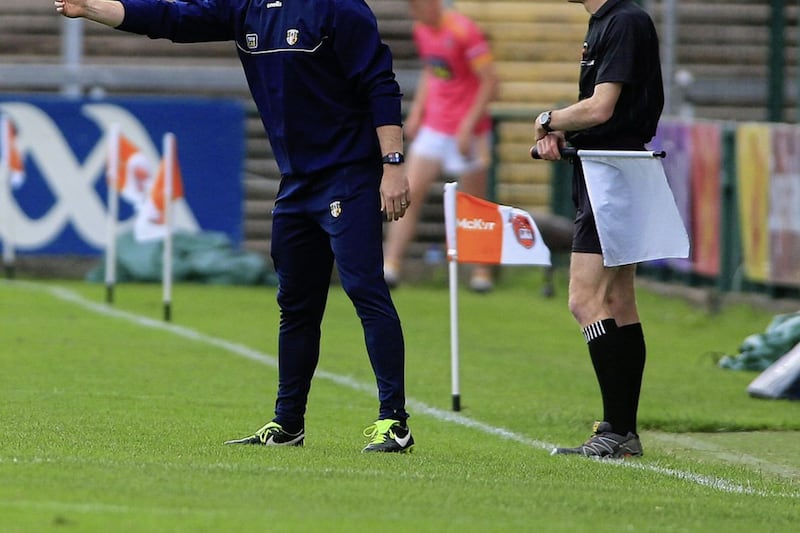SHAKESPEARE had it wrong. To be (in the gym) or not to be (in the gym) is the real quandry. I am from the generation – likely the last – who could exist and compete at the top level without significant gym work. Several players who I played with essentially did no weights at all during their career, bar once every six weeks. These occasions would coincide with the group session to go through a new programme.
Even here they would usually dodge about, stopping at the odd station, lifting and putting back down the odd weight until the session was over. They took the programme print-out and placed it in the bag where it would join all the other programmes that never again saw the light of day. On the field, though, they were never caught out.
This approach would simply not work now. I’d an interesting conversation in my workplace with a patient recently who, being mid-late 20s and having a good physique, had never really had an issue with holding his own on a football pitch. Against younger players he could always
out-muscle them.
He recently found himself playing against a young player not long out of minors and was taken aback when pitted in a tackle with his opponent.
The opponent’s power was such that he immediately knew he was in a spot of bother, despite being the older (and usually stronger) player. This young guy, like his peers, had the strength to easily deal with him, yet had the benefit in terms of agility and speed that youth naturally brings.
The natural conditioning of youth that many of us relied upon in the past is no longer anywhere near enough.
The conditioning of the inter-county squads has undoubtedly worked its way down to club level where the concept of strength and conditioning is now as familiar as stretching or warming up was to the generations before.
It used to be the thing to get you ahead of your opponents. Now it’s simply necessary in order to start on the same level.
There are, of course, some
drawbacks to this. As with everything in life, there will be those that get carried away. These players end up bulking up too much and run about the field shaped like a wrestler rather than a footballer. They’ve blurred the line between body-building and conditioning.
This is not evidence to show that strength and conditioning is a bad idea as some would try to portray it; rather it simply proves the old adage about too much of a good thing being bad.
No, strength and conditioning has arrived and isn’t going away any time soon. As fellow GAA columnist Cahair O’Kane pointed out in these pages, there are many broader benefits to it, but for the traditionalists who bemoan this gym culture there is also a silver lining.
With teams increasingly all committing to this, the playing field is levelling out in terms of the advantages to be gained. Setting aside tactics and systems for a second (an area too where most teams are starting to level out) games will increasingly be won by that cherished combination of skill and desire.
The question regarding strength and conditioning has now moved on from whether it is necessary or not to what age should it be commenced at?
This is probably even more controversial than the original issue of its initial introduction.The first thing to recognise is that modern strength and conditioning programmes are a long way from ‘the heavier the better’ approach of old weight programmes.
Instead, their starting point is to make players move better and more efficiently.
Like putting a Ferrari engine into a Ford Fiesta, the strength and conditioning brigade have long forgot about just adding more power when trying to make players better machines.
As a physiotherapist, I recognise much of their coaching based on proper movement mechanics. In this form, there is really no age that is inappropriate.
The GAA have recognised this too in the creation of their fundamental training programmes which can be applied from U6 up.
In fundamentals, the whole idea is to encourage development of good balance and movement patterns. Interestingly, there are clear lines that can be drawn between ‘fundamental movements’ like these where an U6 may jump in and out of hula hoops to the high-level programmes of senior players where they may find themselves jumping on and off plyo boxes.
All of this I can easily accept, yet I would still really struggle to advocate that a young player would be best served by time in the gym compared to time with a ball in his hand on the pitch.
Off the field and on the field, we seem to be living in rapidly- changing times in GAA.
Maybe it was always so, but the rate of change and the decisions facing those charged with player development seem more complex than ever before.
We have more knowledge than ever before in the area of athletic development, such as strength and conditioning, movement patterns and injury prevention, and the inter-dependent nature of these aspects.
This is all well and good, but for many of us there is still the jarring issue of where, and to what extent, this fits in with footballer development.
As the wag says, Ronnie O’Sullivan didn’t get good at snooker by practising walking.
Coaches at all levels, from club U10 and U12s to inter-county senior level, have so many options now in terms of areas to focus on it can be overwhelming. Add to this the fact that players have probably more pressures or options regarding their time than ever before and the need to ensure maximum bang for your buck in terms of training time is obvious.
Applying another adage – Rome wasn’t built in a day. Any manager – particularly at club underage level – should simply be another link in the chain.
Playing the long game, there is enough time to allow the benefits of strength and conditioning
to be accrued alongside their skills – not instead of.
To achieve this, an element of coherence and overlap between managers at all the various grades is required.
The GAA are to be commended in their rolling out of coaching courses across all levels. The challenge for clubs is to take this information and weave it into a coherent pathway that fits their clubs and coaches as well.
It is a mountain of work, undoubtedly, but my gut feeling is the next generation of dominant teams and clubs will not be thanking the latest strength and conditioning programme or tactical system. Instead, they will point to some form of development pathway.
These will likely encompass young underage levels right through to senior and ensure no one area gets forgotten in chasing the latest fad.
If that is achieved, it’s hard to think of a healthier place for the game to end up.






